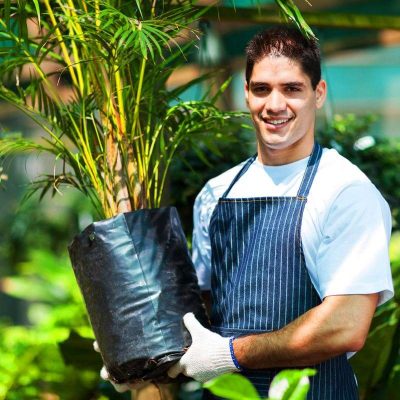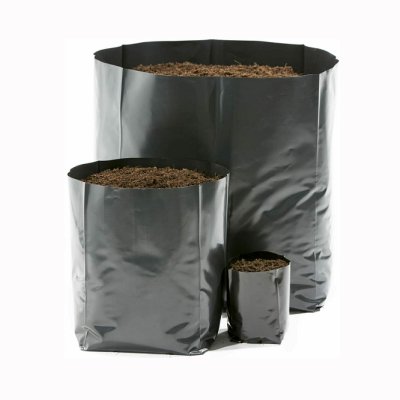When choosing plastic grow bags for your garden, it’s essential to consider several factors to ensure they meet your specific needs. Here’s a comprehensive guide to help you make the right choice:
- Size: Consider the size of the plants you intend to grow and choose grow bags that provide enough space for their root systems to develop. Smaller plants may thrive in 1- to 3-gallon grow bags, while larger plants like tomatoes or peppers may require 5- to 10-gallon bags. Assess the mature size of your plants and choose grow bags accordingly.
- Thickness and Durability: Look for plastic grow bags with a suitable thickness that provides durability and prevents tearing. Thicker bags are generally more robust and withstand wear and tear caused by weather conditions, frequent moving, or root growth.
- Drainage Holes: Ensure that the grow bags have sufficient drainage holes at the bottom to allow excess water to escape. Proper drainage prevents waterlogging, which can lead to root rot. If the grow bags you choose don’t have pre-punched holes, make sure you can easily create them yourself.
- Breathable/Woven Design: Consider whether you prefer grow bags with breathable or woven designs. These allow for better air circulation to the roots, promoting root health, and preventing root circling. However, note that breathable designs may require more frequent watering due to increased evaporation.
- UV Protection: If you plan to use the grow bags outdoors, opt for bags with UV protection. This feature helps prolong their lifespan by reducing the negative effects of prolonged sun exposure on the plastic material.
- Handles: Some plastic grow bags come with handles, making them easier to move around. Handles provide convenience when repositioning plants or relocating the bags for optimal sunlight. Determine whether handles are a desirable feature for your gardening needs.
- Quality and Brand Reputation: Choose plastic grow bags from reputable brands known for their quality and durability. Reading customer reviews and checking for any certifications or product guarantees can help ensure you’re purchasing a reliable product.
- Eco-Friendly Options: While plastic grow bags are not the most eco-friendly choice, you can look for bags made from recycled materials or seek out biodegradable or compostable alternatives. These options have a lower environmental impact and may be preferable for gardeners focused on sustainability.
- Cost: Compare prices and consider your budget when selecting plastic grow bags. While affordability is often an advantage of plastic grow bags, the cost may vary depending on size, brand, and additional features.
- Personal Preferences: Consider your personal gardening style and aesthetic preferences. Plastic grow bags come in various colors and designs, so choose ones that align with your garden’s overall look or your personal taste.
By considering these factors, you can choose plastic grow bags that best suit your gardening needs, budget, and environmental considerations. Remember to balance convenience, durability, and sustainability to make an informed decision.








